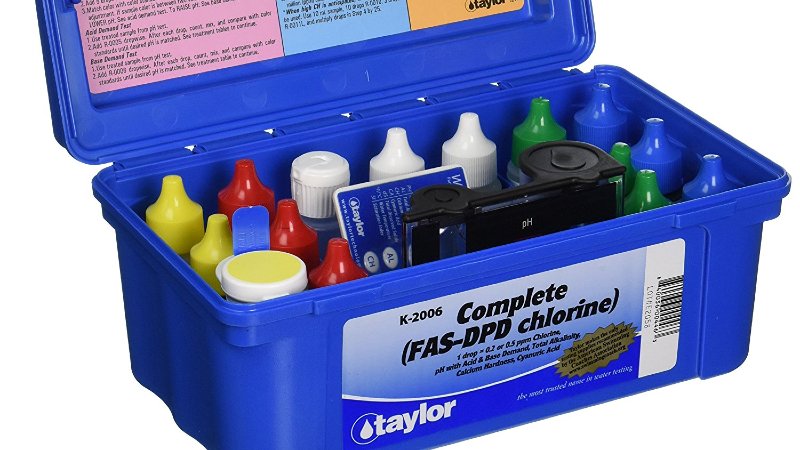The Difference Between Total and Free Chlorine
When it comes to taking care of your swimming pool and keeping the pool water balanced, there's no chemical more important than your sanitizer, which is chlorine. Chlorine is the chemical that works overtime to kill algae spores, bacteria, and other contaminants in your pool water such as swimmer's waste, bugs, pollen dirt particles, and anything else that falls into your pool. Pool water that is not properly sanitized with chlorine can foster the growth of bacteria and go green in a matter of days.

What Is Total, Combined, and Free Chlorine?
For a complete chlorine test, we need to look at total, free, and combined chlorine. It's easy to get them confused, but keep reading and it'll become very clear the role each plays in your pool chemistry.
What Is Free Chlorine?
Free chlorine (FC) is when chlorine is added to your pool, it forms hypochlorous acid (HOCI). Once in the water, it combines with oxygen and forms hypochlorite (CIO). This chemical forms free chlorine and is the sanitizer for your pool water.
What Is Total Chlorine?
Total chlorine (TC) is the sum of free chlorine and combined chlorine. Good kits like the Taylor K-2006 and TF-100 can easily test for total chlorine, free chlorine, and combined chlorine.
What Is Combined Chlorine?
Combined chlorine (CC) is the difference between the total chlorine and free chlorine and is also called chloramines. This one is a bit confusing, so let's start from the beginning and take it one step at a time.
We take our chlorine test with a Taylor K-2006 and get a TC chlorine reading of, let's say, 2.4 ppm. This TC is our starting point. We then add a few extra steps to get our combined chlorine reading. Let's say that's 0.2 ppm. So now we have our TC (2.4) and CC (0.2), right? All we do is subtract our CC from our TC and we get our FC. So 2.4 - 0.2 = 2.2. We have 2.2 ppm FC in the pool to do our bidding at killing organic matter in the pool. A little easy math and the right test kit is all we need.
IMPORTANT: Test strips are easy and safe to use, but will never give us this type of accuracy and these kinds of numbers.
Let's Add It All Up
So let's sum it up into a nice little package. If your total chlorine and free chlorine levels are the same, there’s no combined chlorine in your water, which is perfect. Your CC is 0.0 ppm. If the total chlorine is higher than the free chlorine, the difference of the two is the combined chlorine level.
For your pool to stay properly sanitized, the free chlorine level must be higher than the combined chlorine level. You'll know this by testing on a regular basis. It's really pretty easy once it's explained and you do a little math and have a good test kit. So now you can enjoy your pool all swimming season knowing your pool sanitizer is doing its job of killing algae spores and bacteria in your pool water.
Total Chlorine and Free Chlorine FAQ
Here are answers to the most common questions about total chlorine, free chlorine, and combined chlorine.
How do you raise total and free chlorine?
Simply adding enough chlorine to your pool, either granular or liquid, will increase the total amount of chlorine within the pool.
What happens if free chlorine is low?
When the chlorine level gets too low, bacteria and algae spores are able to multiply and reproduce faster, which causes unhealthy risks to swimmers.
Does shock raise free chlorine?
Shocking a pool refers to the process of adding enough chlorine and maintaining it long enough in order to kill organic material in the pool.
